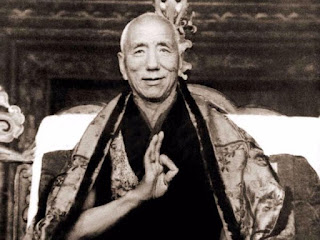What is meditation? Jamyang Khyentse Rinpoche's answer

Sogyal Rinpoche recounts this episode in The Tibetan Book of Living and Dying : Apa Pant told me this story. One day our master Jamyang Khyentse was watching a ‘Lama Dance’ in front of the Palace Temple in Gangtok, the capital of Sikkim, and he was chuckling at the antics of the atsara, the clown who provides light relief between dances. Apa Pant kept pestering him, asking him again and again how to meditate, so this time when my master replied, it was in such a way as to let him know that he was telling him once and for all: “Look, it’s like this: When the past thought has ceased, and the future thought has not yet risen, isn't there a gap?” “Yes,” said Apa Pant. “Well, prolong it: That is meditation.”




